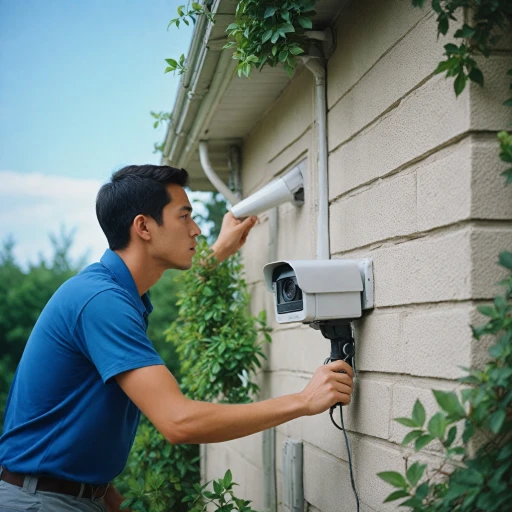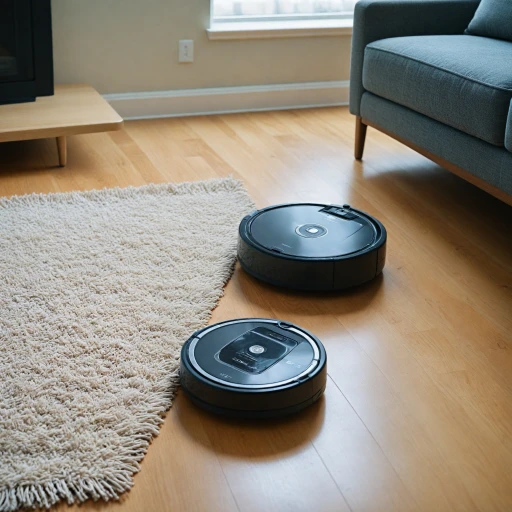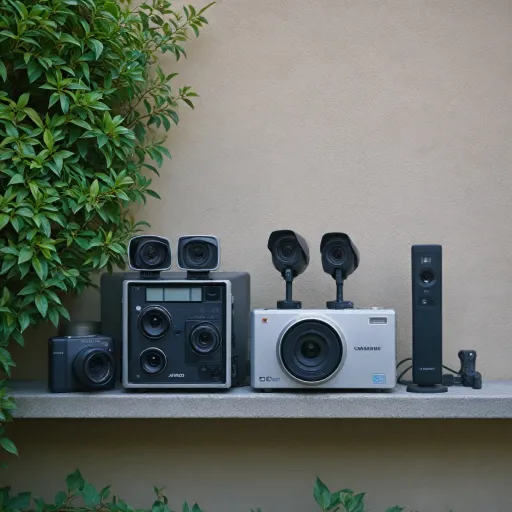
Understanding outdoor PIR detector sensors
How PIR Technology Detects Motion Outdoors
Outdoor PIR detector sensors are a core component in modern home security systems. PIR stands for Passive Infrared, a technology that senses changes in infrared energy—essentially, heat—emitted by people, animals, or vehicles. When a PIR motion sensor detects a sudden change in temperature within its field of view, it triggers an alert or activates a connected device, such as an alarm or security camera.
Many outdoor detectors, like those from DSC and their PowerG wireless range, use advanced tech to improve detection accuracy and reduce false alarms. Some models combine PIR with microwave technology, creating a dual motion detector that verifies movement using two different methods. This dual approach helps filter out environmental triggers, such as moving branches or small animals, making these products a perfect solution for challenging outdoor environments.
Key Features of Outdoor PIR Motion Sensors
- Wide Detection Angle: Many sensors offer a 90 to 180-degree detection range, allowing broad coverage along a wall or ceiling.
- Wireless Installation: PowerG wireless and DSC PowerG sensors simplify installation, eliminating the need for extensive wiring and making them suitable for most homes.
- Battery Life: Modern detectors often use lithium batteries, with a typical life of several years. Low battery indicators and quality indicators help ensure reliable operation.
- Image Verification: Some advanced models can capture an image when motion is detected, providing visual confirmation and supporting alarm verification.
- Link Quality: Wireless products monitor link quality to maintain a stable connection with the main alarm system.
Proper installation is crucial for optimal performance. Placement affects detection range and the likelihood of false alarms. For more details on how outdoor motion sensors work and how to maximize their effectiveness, check out this guide on enhancing home security with outdoor motion sensors.
Understanding the basics of PIR motion detection is the first step. In the next section, we’ll explore the main benefits these detectors bring to your home security setup, including how they help reduce false alarms and improve peace of mind.
Key benefits of using outdoor PIR detector sensors
Why Outdoor PIR Sensors Make a Difference
Outdoor PIR detector sensors are a perfect solution for anyone looking to boost home security. These devices use passive infrared (PIR) technology to detect motion by sensing changes in heat, which means they can spot people or animals moving within their detection range. Many products, such as the DSC PowerG wireless motion detector, combine PIR with microwave technology for dual detection, reducing false alarms caused by wind, pets, or passing vehicles.
- Reliable Motion Detection: PIR sensors are designed to pick up genuine movement, not just random environmental changes. This helps ensure your alarm only triggers when it should.
- Wide Coverage: Some detectors offer a 90-degree or even 180-degree detection angle, making them suitable for wall or ceiling installation. This wide field of view means fewer blind spots around your property.
- Wireless Flexibility: Wireless models, like those using PowerG technology, simplify installation and allow for flexible placement. The quality indicator and link quality features help you find the best spot for strong signal and reliable performance.
- Long Battery Life: Many PIR motion sensors use lithium batteries with a typical life of several years. Low battery alerts ensure you know when it’s time for a replacement, so your system stays powered.
- Reduced False Alarms: Dual tech detectors that combine PIR and microwave sensors are less likely to trigger false alarms. This is especially important outdoors, where weather and wildlife can cause issues for less advanced products.
- Seamless Integration: Modern detectors can link with your home alarm system and security cameras, sending image or motion alerts directly to your phone or monitoring service.
For a deeper dive into how outdoor motion sensors work with your security setup, check out this guide on enhancing home security with outdoor motion sensors.
Choosing the right detector will depend on your property’s layout, the type of motion detection you need, and whether you prefer wireless or wired installation. Features like low battery indicators, long life years, and robust detection tech make these sensors a smart investment for peace of mind.
Challenges in outdoor sensor placement
Common Issues When Placing Outdoor PIR Motion Sensors
Outdoor PIR detector sensors are a perfect solution for early motion detection, but their effectiveness depends heavily on proper installation and placement. Many homeowners face challenges that can impact the performance of their motion detectors, especially when integrating advanced tech like DSC PowerG wireless products or dual PIR microwave sensors.- Environmental Interference: Outdoor environments are unpredictable. Moving branches, pets, or even passing vehicles can trigger false alarms. Dual technology detectors, combining PIR and microwave, help reduce these unwanted alerts, but careful positioning is still essential.
- Angle and Coverage: The degree of detection is crucial. A sensor installed too high on a wall or ceiling may miss motion close to the ground, while one placed too low can pick up small animals. Most PIR motion sensors specify an optimal installation height and angle for best image and motion detection.
- Power and Battery Life: Wireless sensors, like those using PowerG or lithium battery technology, offer flexible installation but require attention to battery life years. Low battery can lead to missed detections or unreliable alarm signals. Many products include a low battery indicator or quality indicator to help maintain performance.
- Signal and Link Quality: For wireless detectors, maintaining strong link quality is vital. Obstacles like thick walls or metal structures can interfere with signal transmission, affecting the reliability of your DSC installation. Always check the quality indicator during setup.
- Weather Conditions: Extreme temperatures, rain, or direct sunlight can affect sensor technology. Some detectors are designed with weather-resistant features, but placement in a sheltered area can extend their life years and reduce false alarms.
Integrating PIR sensors with home security cameras
How PIR Sensors and Cameras Work Together
Integrating outdoor PIR detector sensors with home security cameras creates a more robust and reliable security system. PIR (Passive Infrared) sensors detect motion by sensing changes in infrared energy, which is typically caused by people or animals moving within their detection range. When a PIR motion detector is paired with a camera, the system can trigger image capture or video recording only when genuine motion is detected, reducing unnecessary footage and false alarms.
Advantages of Integration
- Reduced False Alarms: Combining PIR and camera technology helps filter out irrelevant movement, such as tree branches or passing cars, which can trigger false alarms in camera-only setups. Dual tech detectors, like PIR microwave sensors, further minimize these issues by requiring both heat and movement for activation.
- Efficient Power Usage: Wireless cameras with PIR sensors, such as those using PowerG wireless technology, only activate when motion is detected. This conserves battery life, especially when lithium batteries are used, extending the years typical life of the device and reducing maintenance.
- Improved Detection Coverage: Many products offer wide detection angles, such as 90-degree or 180-degree coverage, ensuring that motion is detected across a broad area. Proper installation on a wall or ceiling maximizes the effectiveness of both the sensor and the camera.
- Real-Time Alerts: When a motion detector triggers the camera, homeowners receive instant notifications and can view live images or video. This immediate response is crucial for timely action and peace of mind.
Key Considerations for Integration
- Compatibility: Ensure that the PIR sensor and camera are compatible. Some systems, like DSC PowerG wireless detectors, are designed to work seamlessly with specific alarm panels and cameras.
- Installation: Proper installation is essential. The sensor should be placed where it can detect motion effectively without being triggered by non-threatening sources. Pay attention to link quality and quality indicator lights during DSC installation to ensure reliable communication between devices.
- Power and Battery Life: Choose sensors and cameras with efficient power management. Look for products with low battery indicators and long-life lithium batteries, which can offer up to several years typical life before replacement is needed.
By integrating PIR motion sensors with your home security cameras, you create a perfect solution for reliable motion detection and image capture. This combination leverages advanced technology to enhance overall security, minimize false alarms, and ensure that your system remains effective and easy to maintain.
Choosing the right outdoor PIR detector sensor
Factors to Consider When Selecting a PIR Motion Sensor
Choosing the right outdoor PIR detector sensor for your home security system involves more than just picking a popular product. The right choice can reduce false alarms, improve motion detection accuracy, and ensure reliable performance in various weather conditions. Here are some important points to keep in mind:
- Detection Technology: Look for sensors that combine PIR and microwave technology. Dual tech detectors, such as those using both PIR and microwave, help minimize false alarms by requiring both technologies to trigger an alert. This is especially useful in outdoor environments where animals or moving branches can cause unwanted activations.
- Wireless Capabilities: Wireless detectors, like those using PowerG wireless technology, offer flexible installation options and reduce the need for extensive wiring. Products such as the DSC PowerG motion detector are known for their robust wireless link quality and secure communication protocols.
- Detection Range and Angle: Consider the degree of coverage and the detection distance. Some sensors offer a wide detection angle (up to 90 or 120 degrees) and can cover large outdoor areas. Make sure the sensor’s specifications match your property’s layout.
- Power Source and Battery Life: Many outdoor PIR sensors are battery-powered, often using lithium batteries. Check the typical battery life—some models offer up to five years of operation before needing replacement. Low battery indicators are essential for timely maintenance.
- Installation Flexibility: Evaluate whether the detector can be mounted on a wall or ceiling. Some products are designed for easy installation in various locations, which helps you optimize sensor placement for maximum coverage and minimal false alarms.
- Alarm Integration: Ensure the sensor is compatible with your existing alarm system. DSC products, for example, are widely used and integrate smoothly with many home security setups. Look for a quality indicator or link quality feature to monitor the connection between the sensor and your alarm panel.
- Environmental Resistance: Outdoor sensors must withstand rain, dust, and temperature changes. Check for weatherproof ratings and robust housing to ensure longevity and reliable motion detection.
Comparing Product Features and SKUs
When reviewing products, compare features such as detection range, dual technology, battery life years, and installation options. Pay attention to the SKU (such as DSC) to ensure compatibility with your existing system. Some detectors will also offer image capture or integration with camera systems, adding another layer of security.
Ultimately, the perfect solution balances advanced detection technology, reliable wireless performance, and ease of installation. Prioritize products that offer a strong track record of minimizing false alarms and maintaining consistent detection, even in challenging outdoor environments.
Maintenance and troubleshooting tips
Keeping Your Outdoor PIR Sensors Reliable
Regular maintenance is essential for outdoor PIR detector sensors to ensure consistent motion detection and minimize false alarms. Even the most advanced products, like DSC PowerG wireless motion detectors, need periodic attention to perform at their best.- Battery checks: Most wireless PIR sensors use lithium batteries, offering several years typical life. However, low battery warnings should never be ignored. Replace batteries promptly to avoid gaps in your security coverage.
- Cleaning the sensor: Dust, spider webs, and debris can block the sensor lens, affecting detection quality. Gently clean the lens and housing with a soft cloth every few months.
- Testing detection zones: Walk-test your motion detector regularly to confirm the detection area is still accurate. This is especially important after storms or landscaping changes that might obstruct the sensor.
- Checking link quality: For wireless models, monitor the quality indicator on your alarm panel or app. Poor link quality can reduce reliability and may require repositioning the sensor or adjusting your wireless network.
- Firmware and tech updates: Some products, especially those with dual PIR microwave technology, may receive firmware updates. Check with your manufacturer or installer for any available updates to improve performance and reduce false alarms.
Common Troubleshooting Steps
If your detector will not trigger or sends frequent false alarms, try these steps:- Verify the power supply for wired models or check the battery for wireless sensors.
- Inspect the installation area for new sources of heat, movement, or reflective surfaces that might interfere with motion detection.
- Ensure the sensor is mounted at the recommended wall ceiling height and angle for optimal degree of coverage.
- For DSC installation, consult the manual for your specific SKU DSC model to reset or recalibrate the sensor if needed.
- If using a dual technology detector (PIR microwave), confirm both detection methods are functioning. Sometimes, one tech may be more sensitive to environmental changes.













